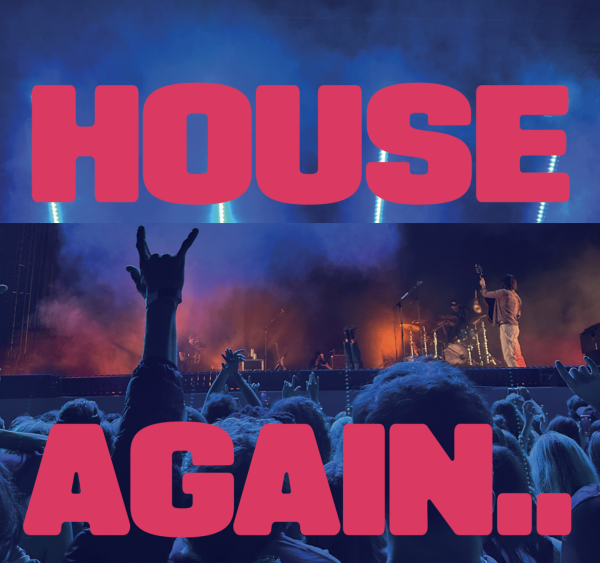More Than Plastic
How Barbie’s hyper femininity and changing brand image can impact children’s views for better or for worse.
Known for her iconic pink wardrobe and expansive career, the first Barbie doll hit the shelves in the late 50s. The blonde, blue-eyed doll was equipped with a stylish outfit and an accessory or two, and would later become a widely famous doll in the hands of every young girl in America.
Over the years Barbie has expanded to other forms of entertainment. Movies were produced, doll houses were sold, and young girls even aspired to look and act like their Barbie doll. Barbie had become the new beauty standard in pop culture decades before the era of social media. However, not all the effects of Barbie were positive. The beauty standards the doll portrayed, like a small waist and euro-centric features, were often unattainable and in reality, Barbie’s body measurements are completely unrealistic and impossible to naturally obtain, especially as a child.

Recently, the dolls have become more inclusive, reaching more communities and relating to more girls by having diverse skin tones, body types, and abilities. With the same recognizable style, Barbie now inspires all kinds of girls to achieve their dream job and work hard. But how will the legacy of Barbie affect the new generation? Especially with the new movie coming out this summer and the skyrocketing increase of social media use, will Barbie’s negative impact on body standards only amplify?
Director of Student Services at Hillsborough City School District Bhavna Narula works with elementary and middle school-aged students focusing on mental health and social and emotional learning. She has experience with being a middle school counselor, administrator, and principal. Throughout her extensive career, Narula has seen the negative effects of Barbie presented on students.
“We begin to see the impact of figures like Barbie starting in as young as third grade,” Narula said. “There is an emphasis on what they [students] look like, and at an age that is defined by trying to fit in, they try to fit in with the stereotypes that are perpetuated by what we see in the media such as Barbie.”
Similar to Narula, Paly junior Annalise Klenow disapproves of the beauty standard often set up for girls through Barbie and other media as it creates unreasonable expectations and low self-confidence.
“It’s not uncommon to see body types like Barbie’s, because it’s not just in Barbie dolls,” Klenow said. “It’s also in cartoons, and it’s very exaggerated.”
The negative effects of Barbie can be reflected in real life especially on school campuses as children exposed to one body type can ridicule others for not fitting in with their body standards.
“We have unintentionally raised girls on a steady diet of what an ideal body shape is, an image that is very white-centric,” Narula said. “Toys like Barbie have shown us that female bodies need to conform to a certain shape, so as students grow, we start to see them fat shaming each other and commenting on body types.”
Although Barbie has negative impacts Klenow feels that the doll can have positive effects on a girl’s childhood as well.
“Barbie has so many occupations, and it shows that your future is unlimited. I think that she embraces femininity in a really positive way,” Klenow said.
Barbie can also inspire children to set high goals for themselves and persevere. With these aspirations, the widespread culture of a “Barbie life” can actually promote a healthy mindset, contradicting the stereotype of needing to rely on a man, with respect to their future.
“I do think that Barbie leads a very admirable life. That’s one great thing we can take away from Barbie, is her drive and motivation and her problem-solving abilities,” Klenow said. “Ken was never the goal.”
However, Barbie still portrays an unrealistic beauty standard which is problematic for young children during their developmental stages.
“Through my professional career, I have seen issues with eating disorders that can connect to the societal image of what girls should be, and is especially harder on students of color,” Narula said.
Recently, Mattel has tried to brand its dolls with more inclusivity to reach out to a wider audience.
“For white students all they see around them in media are mirrors, they can easily flip to any channel or streaming platform and can see people who look like them,” Narula said. “But for students of color, all they have are windows. Those kids don’t see people who look like themselves in the media, so Barbie is responding to that.”
Some still speculate that this newfound inclusivity is just a business scheme to appeal to more markets. Regardless of whether Mattel’s intentions are pure, the outcomes can still be productive.
“When your market is becoming more diverse, it forces you to become more inclusive,” Narula said. “There are more diverse models of Barbie where different cultures and abilities are represented, so I think that’s a step in the right direction.”
The rebranding of the dolls has created an image of Barbie that links to encouragement and healthy advice.
“Barbie wants to help people, so to have everyone look the same, it doesn’t make sense,” Klenow said.
With the new Barbie movie coming out in July of 2023, the past and current controversies of Barbie as well as society’s image of what the “perfect woman” should be are popping back into the spotlight. Although there can be negative effects of Barbie, Mattel seems to be consciously working on how to promote diversity within the Barbie community.
“Barbie is really good at enforcing strong female friendships and embracing femininity in a positive way,” Klenow said. “But there’s still a lot more that could be done.”

2022-2023 Staff Writer
2023-2024 Business Manager
I joined C Mag because I love digital design and writing about arts + culture! My favorite parts...






